Google’s Flutter 3.0 - What’s new Worth Exploring?

Introduction
Google I/O 2022 – An annual developer conference announced many advantages for app developers with the release of Flutter 3.0. Flutter 3.0 is fully-packed with exceptional feature updates such as,
Consistent support for macOS and Linux desktop apps along with Windows
New productivity and performance features
Flutter/Firebase integration improvements
Apple Silicon Support
And much more.
In this blog, you can deep-dive into the top features and announcements about Flutter 3.0. So let’s start exploring.
Flutter – A Brief Intro
Flutter is Google’s mobile app SDK used to deliver superior native experiences on Android and iOS platforms. It offers excellent features like dynamic gestures and material design language that aid developers provide intuitive UIs.
Since the launch of Flutter, Google’s team has constantly updated the improvements and functionalities to offer programmers an extensive range of opportunities for Flutter App Development .
According to the 2021 developer survey , Flutter is the widely used mobile framework by global developers.

Journey of Flutter Framework
Flutter 1.0
The Flutter 1.0 version emerged with new development tools and Metal support.
Flutter 2.0
In the Flutter 2.0 version, Google included various features like,
Native Platform views
Web support with a desktop preview
Sound null safety by default
Flutter 2.5
In the Flutter 2.5 version, Google included various features like Material You, which is an advanced material design.
Flutter 3.0
In the latest Flutter 3.0 version, Google embedded new features which will offer enhanced and robust development tools to build an engaging UX.
Since its release, an open-source programming SDK has evolved into one of the best and most easy-to-use tools for developers. These tools aid in developing Android and iOS mobile apps.
The latest updated SDK version includes essential keynotes in the below-mentioned fields.
Looking for Professional Flutter Developers
Highlighting Features of Google’s Flutter 3.0
1. Stable macOS and Linux apps support
In the Flutter 2.0 version, the Flutter community revealed support for Windows and Web platforms along with Android and iOS. Now the latest Flutter 3.0 version includes consistent support for Linux apps and macOS. You can build an app on any or all of these platforms through a single codebase.
It supports macOS with Universal Binary. It is a format for practical files that executes natively on Apple silicon and Mac computers (Intel-based). For Linux, Google and Canonical have interacted to provide a highly integrated development setup. Flutter 3.0 enables developers to grab cross-platform perks and share UI and logic among these platforms. It also facilitates faster time-to-market and improves developers’ productivity and presence on different platforms.
Flutter now supports,
iOS
Android
Web
Windows
macOS
Linux
2. Support for Material You
Material You is the new unified design language of Google. According to Google, it is a new revolutionary approach to thinking about design. It goes out of old-school paradigms and focuses on individualisation.
With Flutter 3.0, programmers can now leverage Material Design 3, which provides updated visual elements and dynamic colour schemes. Material Design 3 is the latest update of Material Design that adds personalisation and accessibility features centred on users.
3. Firebase Integration
Google’s Firebase is a BaaS (Backend-as-a-Service) app development platform. It supports Flutter and provides hosted backend services.
In the latest Flutter update, Firebase extended its support and incorporated Flutter as a first-class integration. Programmers will leverage improved documentation, tooling, and exceptional widgets such as FlutterFire UI. It provides a reusable UI for profile screens and auth.
4. Flutter Casual Games Toolkit
Many app development platforms are accessible for game development but Flutter 3.0 drives some thrilling updates for casual game developers.
Flutter provides a Casual Games Toolkit with templates’ starter kit and casual game development best practices. The game development community gets the advantage of an open-source Flame engine and hardware-expedited graphics to build casual games. Nevertheless, Flutter is not for game development that includes high-performing 3D action.
5. Dart 2.17
Flutter framework is empowered by a multi-platform, highly productive, and portable Dart programming language formed by Google. It helps with simplified UI creation for mobile and web platforms. Dart’s latest version 2.17 emerged at Google I/O 2022 with new features and updates.
Features of Dart 2.17
Better flexibility for a named parameter
Improved tools for more productivity
In-depth and broader platform integration
Enums with member support
Better parameter forwarding to superclasses
Update for Core library API documentation
6. Firebase Crashlytics
It is a lightweight and real-time crash-reporting service that monitors fatal errors. So you can gather analytics and data on crashes. It also helps to discover, prioritize, and resolve issues.
Flutter 3.0 enables you to avail of this using Flutter Crashlytics Plugin. It provides multiple features to developers to ensure app stability.
7. Performance Improvements
Some performance improvements get released with Flutter’s 3.0 version such as,
Better opacity animations execution in simple cases
Modernised policy for raster cache admission
Partial repaint availed on Android devices
Experimental rendering back-end called Impeller
Quick frame development times because UI threads execute at a priority on iOS and Android
Additionally, multiple pull requests are combined to provide Flutter with a significant performance boost over the former version.
8. Web App Lifecycle
Flutter web apps get a new lifecycle API with the release of the Flutter 3.0 version. It helps developers to manage the app’s bootstrap process. It is implemented in multiple cases including,
A Splash Screen
A loading indicator
An HTML landing page is shown before the Flutter App
9. Foldable Mobile Device Support
Flutter 3.0 has announced foldable mobile devices support that enables developers to build engaging, responsive, and lively experiences through new features and widgets.
10. All Desktop Platforms Accessibility
As mentioned above, the Flutter framework is now used to build apps for iOS , Android, Web, Windows, macOS, and Linux platforms. It helps with accessibility services like inverted colours, screen readers, accessible navigation , etc.
11. Deprecating Windows 7/8 for Development
The old Windows versions are not supported by Microsoft anymore. With Flutter 3.0, the community also endorsed the Windows 10 version for development. However, the Flutter framework now provides restricted testing on older versions. The Flutter community keeps supporting Flutter apps running on Windows 7 and 8.
12. Variable Refresh Rate Support on iOS
With the announcement of Flutter 3.0, the framework now helps with the variable refresh rate on different iOS devices through ProMotion displays.
Flutter-based applications can now perform at a refresh rate of 120 Hz on iPad Pro and iPhone 13. Previously, iOS devices were limited to 60 Hz and these apps can now give a flawless experience through fast animations.
13. Simplified iOS Releases
Flutter 3.0 has included new options for the Flutter build IPA command. It helps to streamline the application releases.
In a Nutshell
As per the material design initiative, the Flutter framework generates a hierarchy of ARIA attributes. This hierarchy enables you to access the app’s content easily. Users can leverage the visual effects of the app using keyboard shortcuts and gestures. It not only enables navigation from apps that were complicated to read but also makes the user journey simple.
Altogether, Flutter creates an accessibility tree automatically and according to widgets. Global brands are adopting Flutter 3 as it backs accessibility services in production apps making it highly suitable for prominent platforms. With Flutter’s latest version, developers can build leading-edge apps for any user. So, download Flutter 3 today and leverage the benefits it drives for your users.





 Have an Idea?Let’s Build It Together!
Have an Idea?Let’s Build It Together!